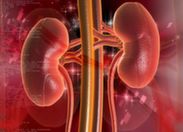Related Articles
- 19 Dec 22
Seasonal affective disorder (SAD), also referred to as seasonal depression, is a mood disorder recognized by the Diagnostic and Statistical Manual of Mental Disorders (DMV).
- 01 Jul 13
$path = isset($_GET['q']) ? $_GET['q'] : '
';
$link = url($path, array('absolute' => TRUE));$nid = arg(1);
if ($nid == 201307){
?>download pdf
}
?>
Polycystic kidney disease (PKD) is a genetic disease in which multiple cysts grow on the kidneys. As the cysts expand in size, they impinge on the normal structure of the kidney, and there is a decrease in kidney function. In people with severe forms of the disease, this leads to a condition called end-stage renal disease (ESRD), which refers to such low kidney filtering function that dialysis and kidney transplantation become necessary.26 Aug 13$path = isset($_GET['q']) ? $_GET['q'] : '
';
$link = url($path, array('absolute' => TRUE));$nid = arg(1);
if ($nid == 201308){
?>download pdf
}
?>
High powered, intense heat laser therapy has been used surgically to ablate tissue since the mid-20th century. While laser has been used in the Soviet Union and Europe since the 1970s, it wasn’t until the early 1990s that laser therapy entered North America. In 2002 the first laser therapy device was cleared by the FDA. Today, low-level laser therapy (LLLT) is an emerging clinical tool used by naturopathic doctors, medical doctors, and rehabilitation specialists that is rapidly gaining momentum because of its non-invasive nature
Newsletter
Your subscription could not be saved. Please try again.
You've successfully subscirbed to Naturopathic Currents monthly newsletter!
Most Popular
- 07 May 15
- 17 Jun 13
- 17 Jun 13
- 17 Jun 13
- 01 Jul 13
- 17 Jun 13
- 17 Jun 13
- 17 Jun 13
- 01 Jul 13
- 17 Jun 13
- 17 Jun 13
- 17 Jun 13
- 01 Jul 13

















